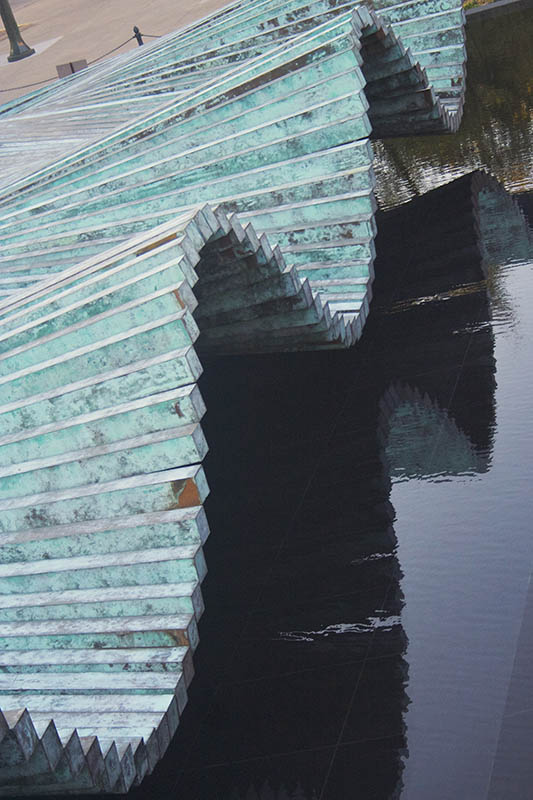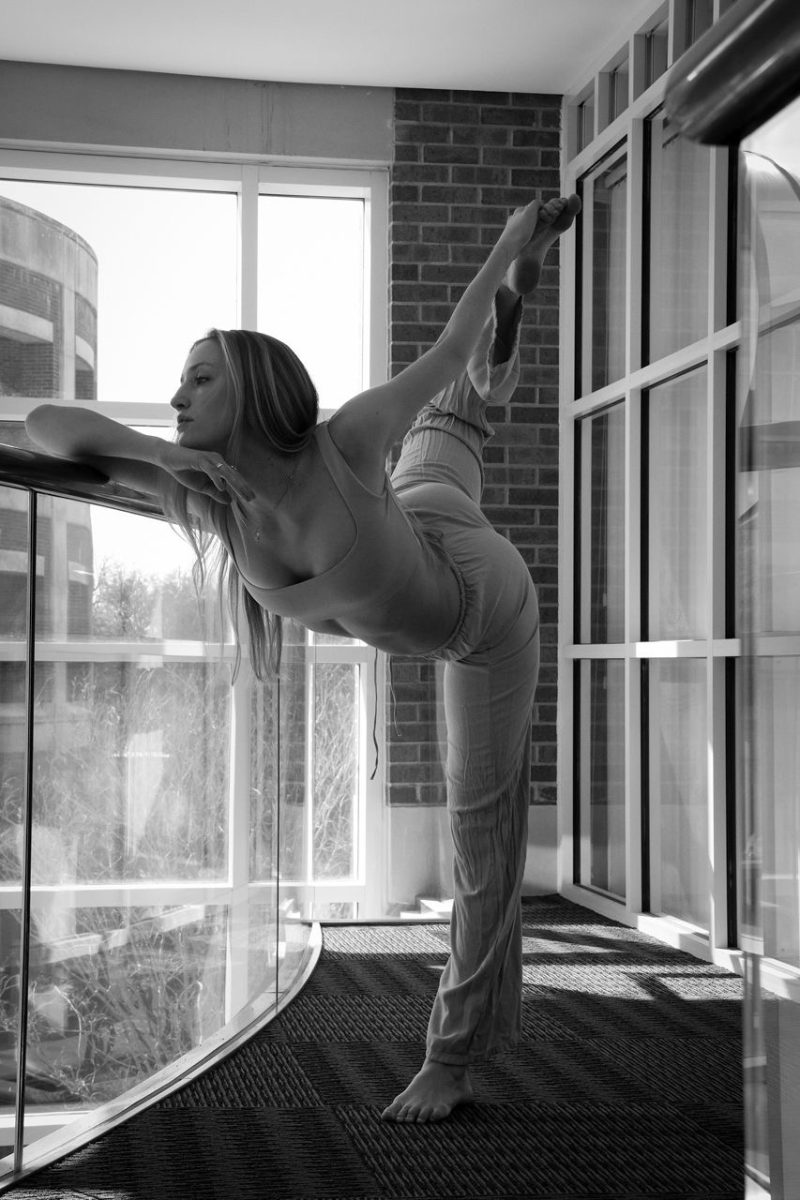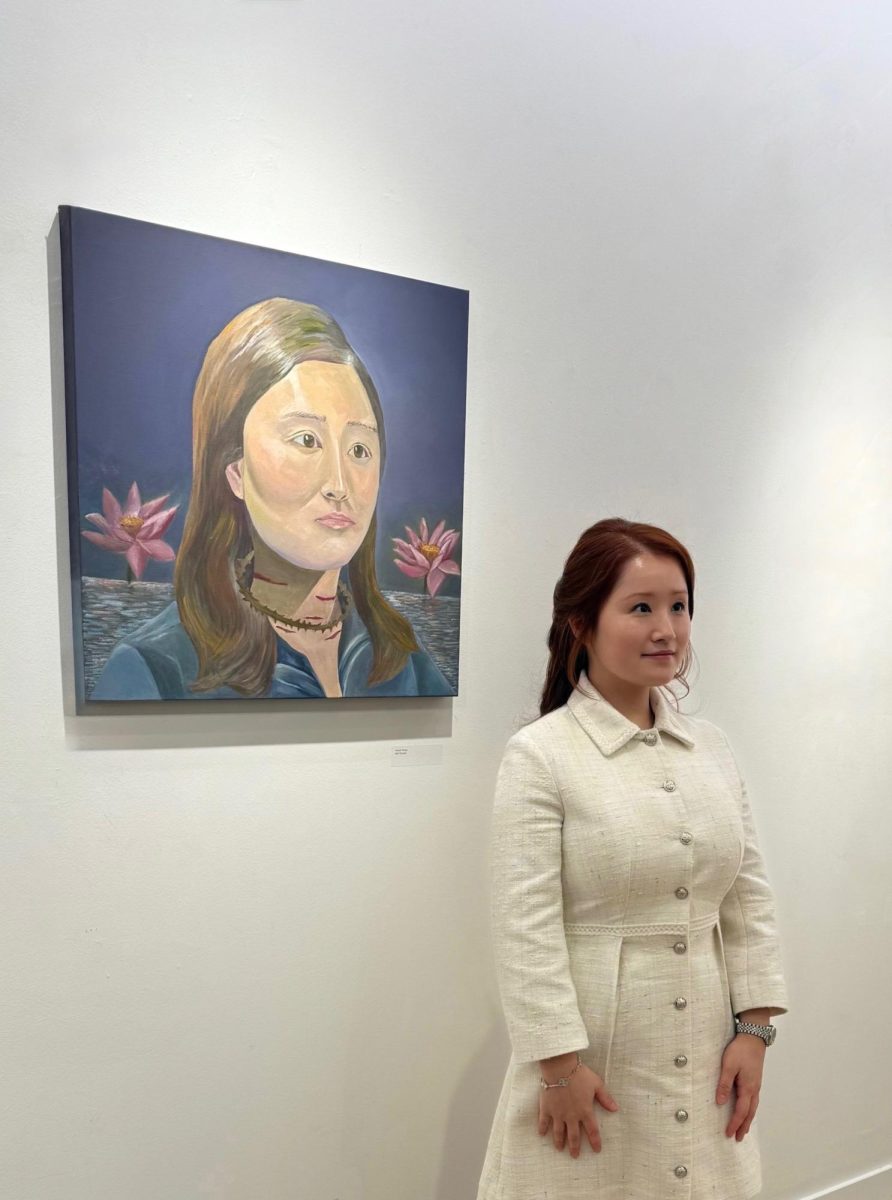
Calatrava’s “Wave” has been gracing the SMU campus since 2002 . (Kalen Schou/The Daily Campus)
Anyone who drives down the Boulevard, notices it – the rising and falling sculpture in the front plaza of the Meadows Museum. Santiago Calatrava’s “Wave” is just one of the many beautiful aspects of the SMU campus.
Calatrava, the designer of this pristine sculpture, is a world-renown architect, engineer and artist from Valencia, Spain.
Because the Meadows Museum hosts one of the largest collections of Spanish art outside of Spain, Calatrava envisioned “Wave” to serve as a symbol for the relationship between Spain and Texas.
Calatrava incorporated several elements both in inspiration and materials from Spain into “Wave.”
Choosing the shape of a wave was inspired by the beaches along the Mediterranean Sea in Calatrava’s home-town Valencia.
Furthermore, all of the 129 bronze coated and hollow steel beams, which each weigh 441 pounds, were manufactured in Spain and shipped to Dallas.
Also, King Juan Carlos and Queen Sofia brought water from Spain that was poured into the reflecting pool at the base of “Wave” for the opening of the sculpture in 2002.
The fact that Calatrava designed “Wave” especially for the front plaza of the Meadows Museum relates to SMU’s ties to Spanish culture as well. The Meadows School of the Arts made Calatrava the 15th recipient of the Algur H. Meadows Award for Excellence in the Arts in 2000.
If you are a student at SMU and have yet to walk around the front plaza of the Meadows Museum or visit inside the museum, now is an excellent opportunity to see firsthand some f the most important Spanish artwork in the world.
First, admission is free for students. Second, the newly renovated plaza outside of the Meadows Museum looks stunning.
If you need evidence, check out the plaza after dark when well-placed lights illuminate the spectacular sculptures.
From the top of the plaza, you can observe “Wave” from above, a perspective Calatrava wanted people to have when he initially designed the sculpture. Looking from the plaza, the sculpture appears completely different. No longer resembling the graphical representation of a sin curve, “Wave” looks like the ocean surface moving in smooth, rolling motion.
The Meadows Museum offers a rare chance for SMU students to step into the Spanish world of art and culture.
Take advantage of the unique exhibitions at the Meadows Museum and see for yourself what captivated Meadows so much during the 1950s that allowed SMU to present this encompassing collection of Spanish artwork.








